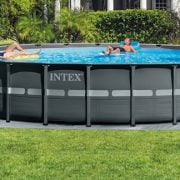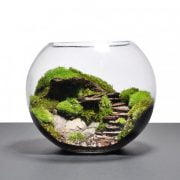Homeowners are always looking for ways to save money, says Pedram Zohrevand, and one of the best ways to do that is to make your home more energy-efficient. Not only will you save on your monthly energy bills, but you’ll also be doing your part to help the environment. Here are five renovation tips that will make your home more sustainable.
Use Recycled Materials In Your Construction Whenever Possible
The construction industry is one of the largest consumers of natural resources, using everything from wood and minerals to oil and water. In recent years, there has been an increased focus on sustainable construction practices that aim to reduce the impact of development on the environment. One way to do this is to use recycled materials in construction whenever possible.
Recycled lumber, for example, can be used in framing and decking, while recycled steel and aluminum can be used in structural elements. Using recycled materials helps to conserve natural resources, reduces pollution, and creates jobs in the recycling industry. In addition, it can also save money on construction costs. As more builders and homeowners look for ways to reduce their environmental impact, using recycled materials in construction will become increasingly popular.
Install Energy Efficient Windows And Insulation
Making your home more energy efficient is a great way to save money and help the environment. One of the best ways to do this is to install energy-efficient windows and insulation. Energy-efficient windows help keep heat in during the winter and out during the summer, meaning that your heating and cooling costs will decrease.
Insulation also helps to keep heat in, making your home more comfortable and saving you money on your energy bills. Both of these improvements will also help to reduce your carbon footprint. So if you’re looking for ways to save money and be more environmentally friendly, installing energy-efficient windows and insulation is a great place to start.
Make Use Of Solar Or Wind Power To Generate Electricity
Solar and wind power are two of the most promising renewable energy sources. Unlike fossil fuels, they are inexhaustible and emit no pollutants. Solar power is generated by converting sunlight into electricity, while wind power is generated by harnessing the wind’s kinetic energy.
Both technologies have been rapidly evolving in recent years, and they can now generate electricity at a competitive cost with traditional sources. In addition, solar and wind power offer many other benefits. They provide a source of decentralized power that can be used to improve grid resilience, and they also create jobs and spur economic growth. As we move towards a low-carbon future, we must use solar and wind power to generate electricity.
Choose Environmentally Friendly Building Materials Like Bamboo Or Cork Flooring
When building or remodeling a home, it’s essential to consider the environmental impacts of the materials you use. Traditional materials like wood and concrete have a heavy carbon footprint, while newer choices like bamboo and cork are more sustainable. Bamboo is a fast-growing grass that can be harvested without damaging the environment, and cork is a renewable resource that doesn’t require cutting down trees.
In addition, both bamboo and cork are highly durable, so that they will last for many years with proper care. Bamboo and cork are more environmentally friendly than traditional building materials and add a unique style to your home. So when you’re ready to start your next building project, consider using bamboo or cork flooring to make your home more sustainable.
Maximize Natural Light And Ventilation To Reduce The Need For Artificial Lighting And Cooling
Introducing more natural light and ventilation into space is one of the most effective ways to reduce the need for artificial lighting and cooling. By maximizing the amount of sunlight that enters a room, you can dramatically reduce the amount of energy needed to light the space.
In addition, good ventilation will help to keep the air in an area fresh and cool, reducing the need for air conditioning. There are many simple ways to introduce more natural light and ventilation into a space, such as opening curtains and windows, installing skylights, or using reflective surfaces to bounce light around. You can significantly reduce your energy consumption and create a more comfortable and pleasant environment by making a few simple changes.
Final Thoughts
These are just a few ways to make your home more environmentally friendly, explains Pedram Zohrevand. If you’re ready to take the plunge, consult a professional about doing a complete energy audit of your home. They can help you identify where you could make the most significant improvements in efficiency and sustainability. Making your home eco-friendly doesn’t have to be expensive or difficult; it just takes a bit of knowledge and some effort on your part.














Comments